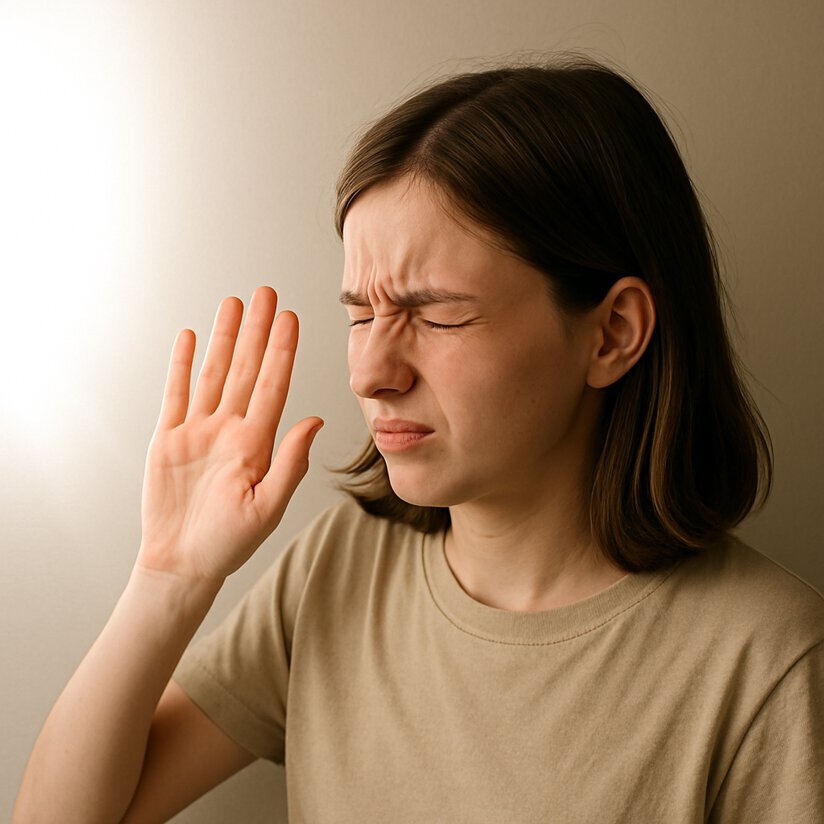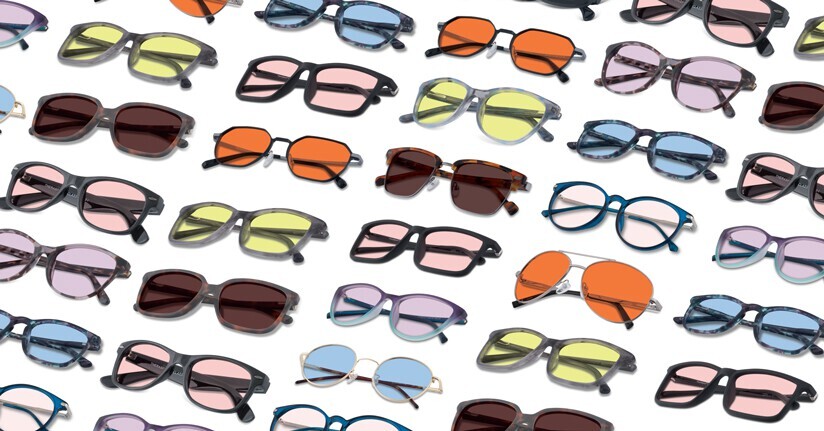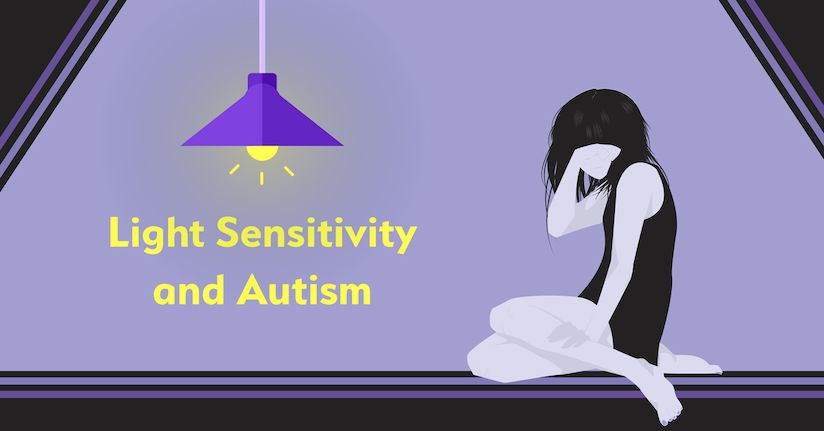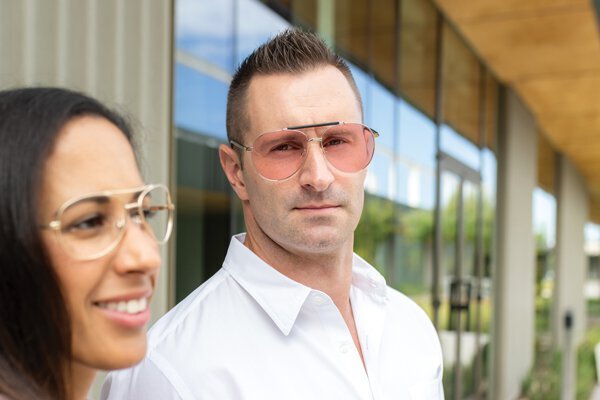Light Sensitivity and Autism Spectrum Disorder
Key Highlights
- As many as 75% of people with autism report they are sensitive to light
- Several possible explanations include comorbid conditions, altered eye and brain functioning, and external influences
- Fluorescent lighting (and other artificial sources) along with bright sunlight are particularly problematic
- Minimizing environmental stressors, wearing a hat or specialty glasses for autism light sensitivity, utilizing device-specific protections can help manage symptoms
It is widely understood that those on the autism spectrum typically experience abnormalities in how they process visual stimuli like light. These sensory impairments can look very different for an autistic individual when compared with a person without autism, but light sensitivity underscores it all. We take a comprehensive look at the research and recommendations for sensitivity to light that stems from autism spectrum disorder.
How Light Sensitivity Affects Those with Autism
With as many as 90-95% of people with autism spectrum disorder having external sensitivities, it is not surprising that exposure to bright light can affect their symptoms. Studies have shown that it may not be as prominent as other sensory problems—notably hearing and touch—but researchers have shown that 75% of autistic individuals self report as being sensitive to various types of light.2 Other analyses have noted that hypersensitivity to light and photophobia increases with autistic traits as well.3
There is also evidence that people with autism may not just exhibit light-avoiding behaviors or negative responses to light exposure; some may actually seek out or become fascinated with light.4 Both are signs of disruption to their sensory processing.

Why Light Negatively Impacts Autism
With so little direct research on light sensitivity and autism, experts have had a difficult time explaining exactly what causes painful responses to light reported by many with the disorder. However, some hypotheses have emerged.
Researchers have linked autistic individuals with abnormal pupillary light reflex, which refers to how the pupil reacts and adapts to the brightness of various light sources. Photosensitive retinal ganglion cells—which have been implicated in migraine-related light sensitivity—are central in this process, thus suggesting that impairment may similarly affect how autistic persons perceive light.3
There is also a high co-occurrence of epilepsy syndromes in people with autism, which may explain particular sensitivities to flashing or flickering lights, dramatic changes in lighting conditions, as well as stronger negative reactions red wavelengths and patterns.5,6 Other frequent comorbid conditions, like sleep disorders and anxiety, may further aggravate light and sensory sensitivity.
Interestingly, those with autism have also been found to have physical differences in the structures of their central nervous systems. Furthermore, there is evidence that they also have a lower neurological threshold for environmental stimuli, including light. These physical changes contribute to the many visual and behavioral changes experienced by those on the autism spectrum.1,3
Another explanation deals with an overload of the senses. Bright lighting added to an already visually-disorienting environment or high-stress situation may provoke strong and painful responses to light. This is further compounded by the intensity of the light, the specific wavelengths and any harsh glare. As a result, the brain becomes confused, hindering one's ability to process light stimuli.7
Fluorescent Lighting and Autism
Certain types of lighting, specifically fluorescent lighting, have been shown to have a particularly negative affect on individuals with autism.
Approximately half of autistic individuals experience what is classified as a severe sensitivity to fluorescent lighting. In fact, one small study found that the use of fluorescent lighting increased the repetitive behaviors of children with autism, which may be attributed to a hypersensitivity to fluorescent light flicker.1,10
Fluorescent lighting also has been shown to be less desirable than LED lights, with fluorescents having a greater negative affect on engagement, cognitive performance, and other behaviors.11
Sunlight and Autism
Sunlight sensitivity seems to be a particularly common symptom for those with these types of sensory issues. People describe higher stress levels, greater pain and discomfort, and avoidance behaviors when exposed to sunlight.12 This is perhaps best explained by the intensity of sunlight as well as the glare created by sunlight bouncing off reflective surfaces.
Signs and Symptoms of Autism Light Sensitivity
Sensitivity to light can manifest in different ways for people with autism. For instance, physical symptoms may include:3
- Lower tolerance for light
- Discomfort from fluorescents and other artificial light
- Sensitivity to bright sunlight and harsh reflective glare
- Hyperreactivity to flashing light sources and disorienting or "busy" patterns
- Light avoidance behaviors (e.g. shielding eyes, staying inside a darkened space)
- Light seeking behaviors (e.g. flickering lights on and off, moving toward light sources)
- Afterimages
- Visual snow
- Headaches or migraines triggered by light8,9
Other signs may include repetitive behaviors (stereotypical of autism) as well as poor eye contact or eye movement.
Increased anxiety is also reported alongside autism-related sensory deficits; this is reinforced by broader clinical studies showing that light exposure can be a prominent source of anxiety in sensitive individuals—you can read more about this connection here. Worse still, these types of sensory disruptions can lead to social problems and worsening educational outcomes, at least for school-aged autistics.8
How to Reduce Light Sensitivity from Autism
Broad recommendations for reducing light sensitivity may include things like:
- Minimizing exposure to fluorescent lighting and replacing it with indirect natural or incandescent lighting
- Maintaining rooms with dim lights
- Wearing a hat with a visor when fluorescent lights cannot be avoided
- Wearing dark and polarized sunglasses on bright, sunny days outside
- Activating screen- and device-specific features to reduce brightness, blue light exposure, and unwanted motion
- Reducing other visual clutter and environmental stressors
Many people are turning to precision-tinted glasses like TheraSpecs, which offers a range of lens options for people wanting better light management for sensory overload and related sensitivities. In addition, TheraSpecs help reduce the sensitivity to fluorescent lighting (and other artificial sources) by filtering out the most irritating wavelengths as well as the invisible pulsing that is part of its core functioning.
TheraSpecs also offers specialty sunglasses with dark and polarized lenses that provide enhanced protection against sunlight. Plus, all of its lens options can be made with prescription or reader correction, and many come in a variety of lens strengths to meet the unique light sensitivity needs of people with autism.
Consulting a healthcare provider or your child’s pediatrician about how to decrease light sensitivity in someone with autism is important. Just as each person may have a different visual experience or trigger for light sensitivity, different options may be recommended.
References:
1Coulter RA. Understanding the visual symptoms of individuals with autism spectrum disorder (ASD). Optom Vis Dev 2009;40(3):164- 175.
2MacLennan K, O'Brien S, Tavassoli T. In Our Own Words: The Complex Sensory Experiences of Autistic Adults. J Autism Dev Disord. 2022;52(7):3061-3075. doi:10.1007/s10803-021-05186-3
3Sperandio I, Unwin KL, Landry O, Chouinard PA. Size Constancy is Preserved but Afterimages are Prolonged in Typical Individuals with Higher Degrees of Self-Reported Autistic Traits. Journal of Autism and Developmental Disorders. 2017;47(2):447-459. doi:10.1007/s10803-016-2971-6.
4Baranek GT, David FJ, Poe MD, Stone WL, Watson LR. Sensory Experiences Questionnaire: discriminating sensory features in young children with autism, developmental delays, and typical development. J Child Psychol Psychiatry. 2006;47(6):591-601. doi:10.1111/j.1469-7610.2005.01546.x
5Besag FM. Epilepsy in patients with autism: links, risks and treatment challenges. Neuropsychiatr Dis Treat. 2017;14:1-10. Published 2017 Dec 18. doi:10.2147/NDT.S120509
6Simmons D, Robertson A. Visual symptoms in adults with autism spectrum disorders. i-Perception. 2012;3(6):397. doi:10.1068/ie397
7Light Sensitivity and Autism, ADHD, SPD and Developmental Delays. https://epidemicanswers.org/light-sensitivity-and-autism-adhd-spd-developmental-delays/
8Victorio M. EHMTI-0290. Headaches in patients with autism spectrum disorder. The Journal of Headache and Pain. 2014;15(Suppl 1):B37. doi:10.1186/1129-2377-15-S1-B37.
9Sullivan JC, Miller LJ, Nielsen DM, Schoen SA. The presence of migraines and its association with sensory hyperreactivity and anxiety symptomatology in children with autism spectrum disorder. Autism. 2014 Aug;18(6):743-7. doi: 10.1177/1362361313489377. Epub 2013 Sep 26.
10Colman RS, Frankel F, Ritvo E, Freeman BJ. The effects of fluorescent and incandescent illumination upon repetitive behaviors in autistic children. J Autism Child Schizophr. 1976 Jun;6(2):157-62.
11Mallory C, Keehn B. Implications of Sensory Processing and Attentional Differences Associated With Autism in Academic Settings: An Integrative Review. Front Psychiatry. 2021;12:695825. Published 2021 Aug 27. doi:10.3389/fpsyt.2021.695825
12Rattray F, Ruane M, Saliko N, Absoud M, Happé F. Gathering autistic adults’ visual experiences to inform adaptations: a qualitative interview study. Disabil Soc. 2025;1-28. doi:10.1080/09687599.2025.2498415
Last updated 29th July 2025

TheraSpecs® Glasses for Light Sensitivity
Find the glasses that fit your needs and lifestyle, and stay protected from screens, fluorescents, unwanted blue light, sunlight, flashing lights, and more.
Shop Now





